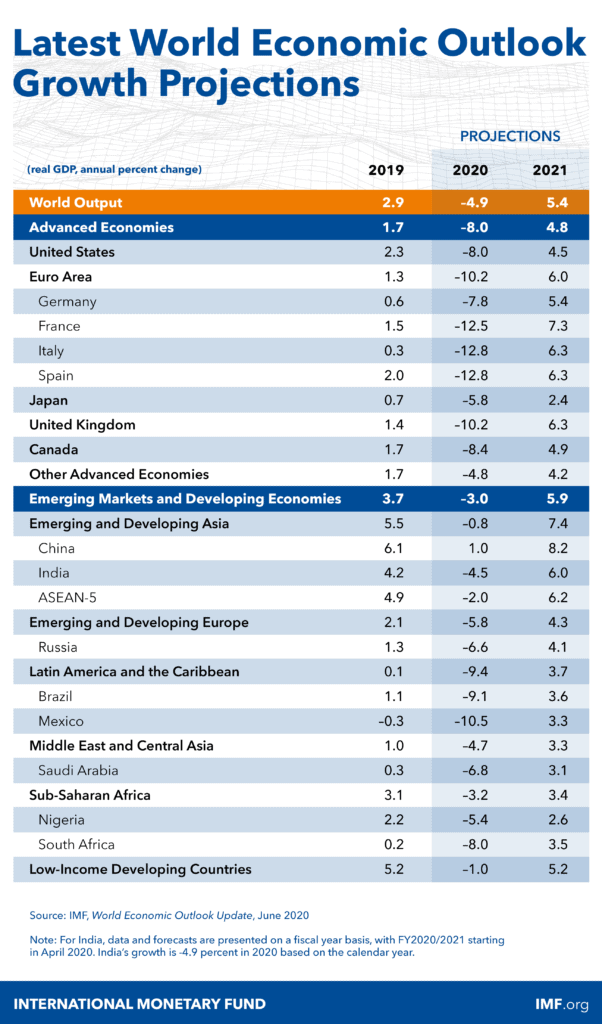Global growth is projected at –4.9% in 2020, 1.9 percentage points below the April 2020 World Economic Outlook (WEO) forecast, said IMF recently.
The coronavirus pandemic has had a more negative impact on activity in the first half of 2020 than anticipated while the recovery is projected to be more gradual than previously forecast, the fund pointed out.
IMF predicted that the global economy would grow 5.5% in 2021.
Overall, this would leave 2021 GDP some 6½ percentage points lower than in the pre-pandemic projections of January 2020, IMF added.
As with the April 2020 WEO projections, there is a higher-than-usual degree of uncertainty around this forecast, IMF noted.

“The baseline projection rests on key assumptions about the fallout from the pandemic. In economies with declining infection rates, the slower recovery path in the updated forecast reflects persistent social distancing into the second half of 2020,” IMF said.
According to the fund, other key assumptions include: greater scarring (damage to supply potential) from the larger-than-anticipated hit to activity during the lockdown in the first and second quarters of 2020; and a hit to productivity as surviving businesses ramp up necessary workplace safety and hygiene practices.
For economies struggling to control infection rates, a lengthier lockdown will inflict an additional toll on activity, IMF said, adding that the forecast assumes that financial conditions—which have eased following the release of theApril 2020 WEO—will remain broadly at current levels.
Alternative outcomes to those in the baseline are clearly possible, and not just because of how the pandemic is evolving, the fund noted.
The extent of the recent rebound in financial market sentiment appears disconnected from shifts in underlying economic prospects—as the June 2020 Global Financial Stability Report (GFSR) Update discusses—raising the possibility that financial conditions may tighten more than assumed in the baseline, the fund added.




